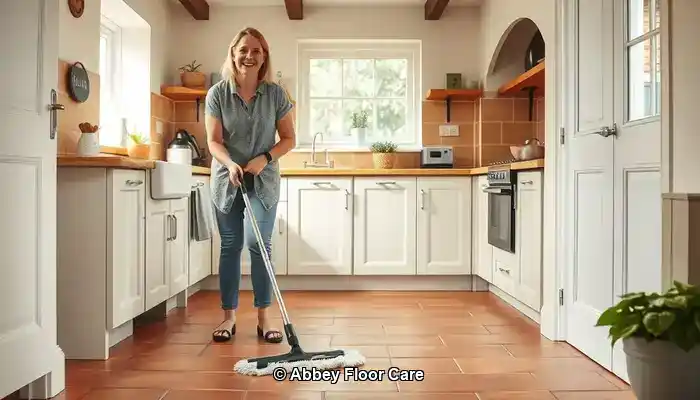Last Updated on September 29, 2025, by David
Essential Insights for Maintaining Clean Terracotta Tiles
-
- Terracotta is extremely porous, which makes it susceptible to absorbing dirt rapidly, particularly in humid climates like Surrey.
- Effective sealing is crucial to stop moisture and grime from infiltrating the tile surface.
- <b>Regular maintenance is vital</b>—daily sweeping and weekly mopping with pH-neutral cleaners are essential for preserving the tile’s aesthetics.
- <b>Avoid harsh chemicals and steam mops</b>, as these can damage the sealant and etch the tile surface.
- Eco-friendly cleaning products are recommended, especially in households with pets or children.
- Professional restoration services provide deep cleaning and resealing for long-lasting protection.
- Strategic placement of rugs and mats in high-traffic areas can significantly reduce dirt transfer.
- Effective moisture management is key—ensuring good ventilation and prompt spill clean-up helps prevent staining and mould growth.
Why Do Terracotta Tiles Become Dirty So Quickly?
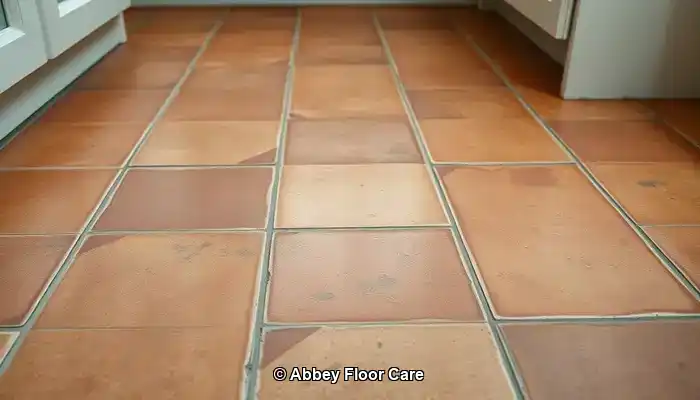
Terracotta Cleaning Tips for Lasting Freshness: Terracotta tiles are an aesthetically pleasing choice for flooring, particularly in traditional or rustic-style homes throughout Surrey. Their warm hues and natural texture infuse character into any environment. However, despite its allure, terracotta is known for its tendency to accumulate dirt quickly. This understanding of why it becomes dirty is the first step towards effective cleaning and maintenance.
Pro Tip: Recommended Products for Daily Terracotta Maintenance
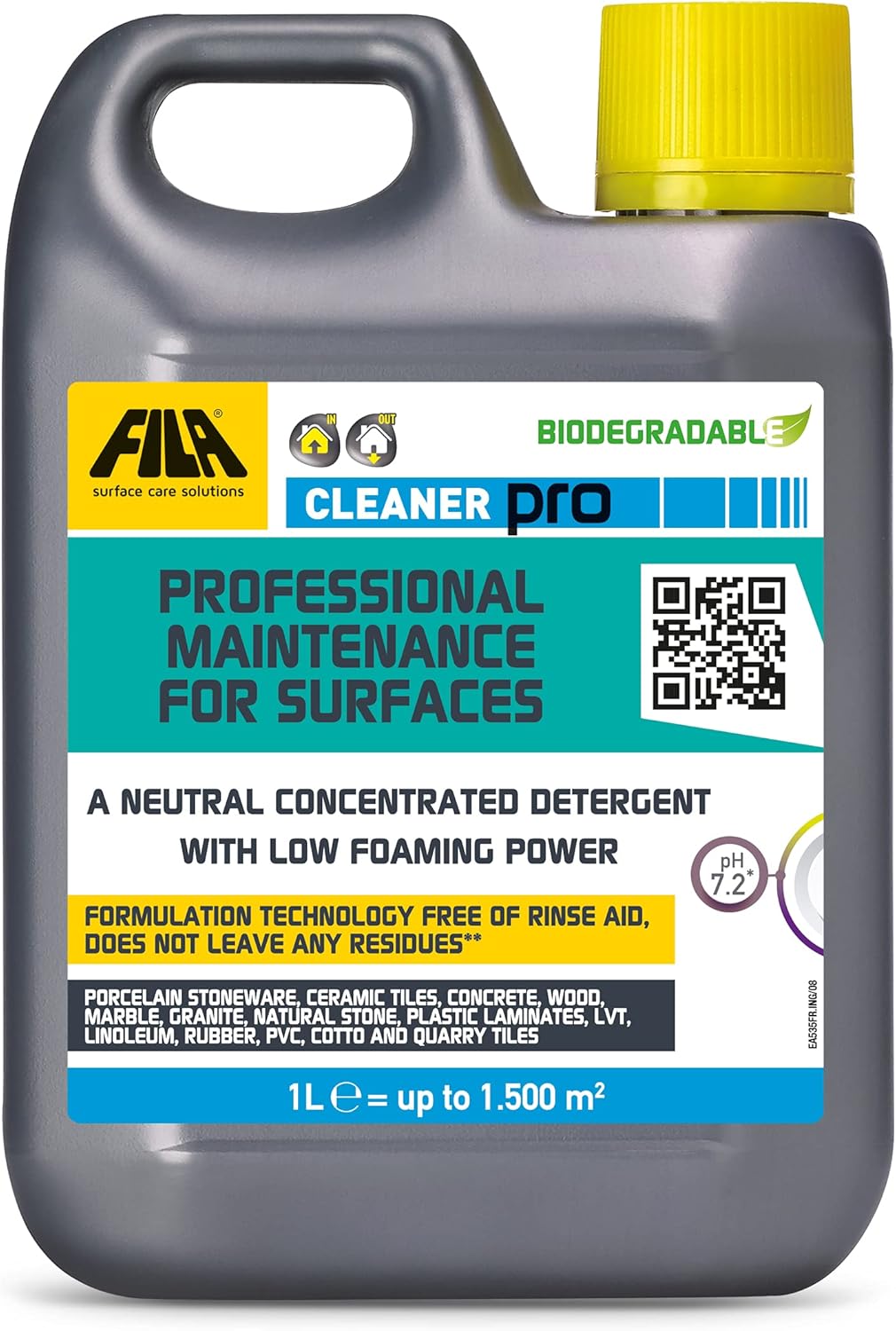
Fila Pro Floor Cleaner
|
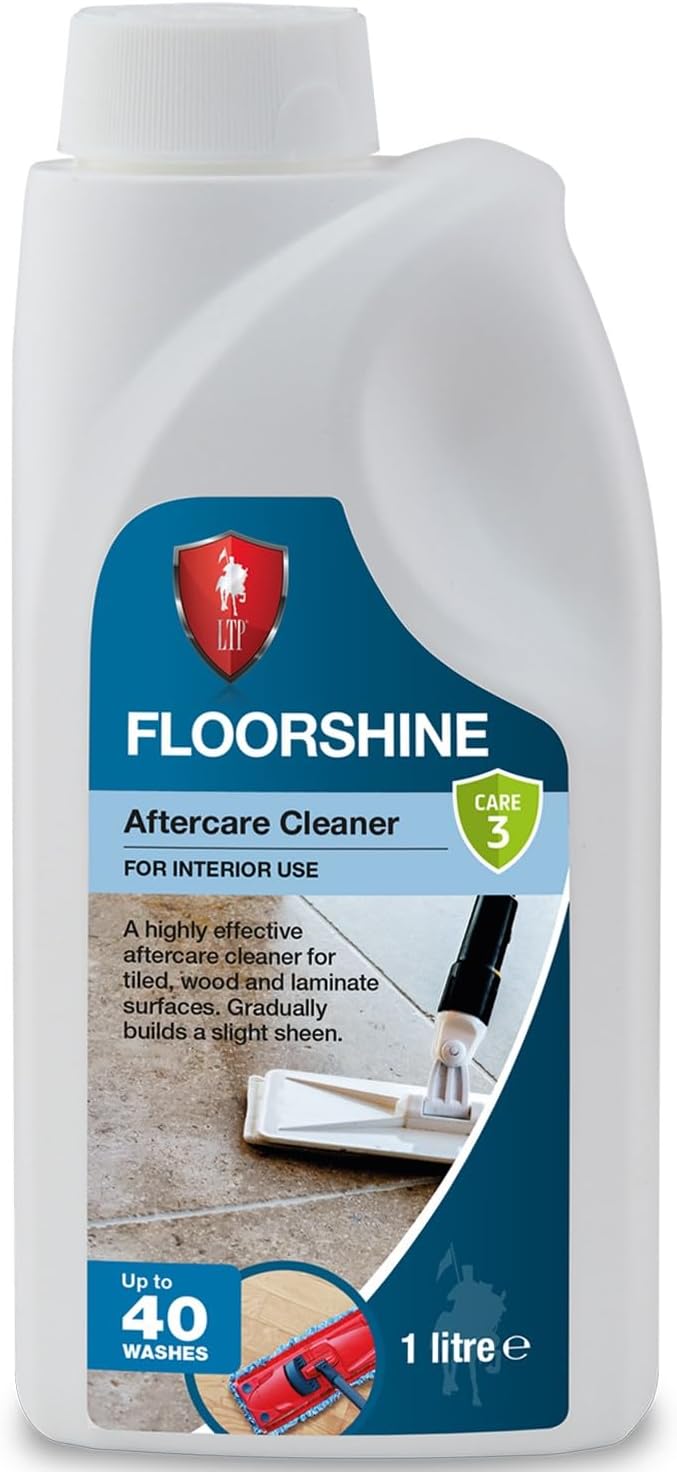
LTP Floorshine
|
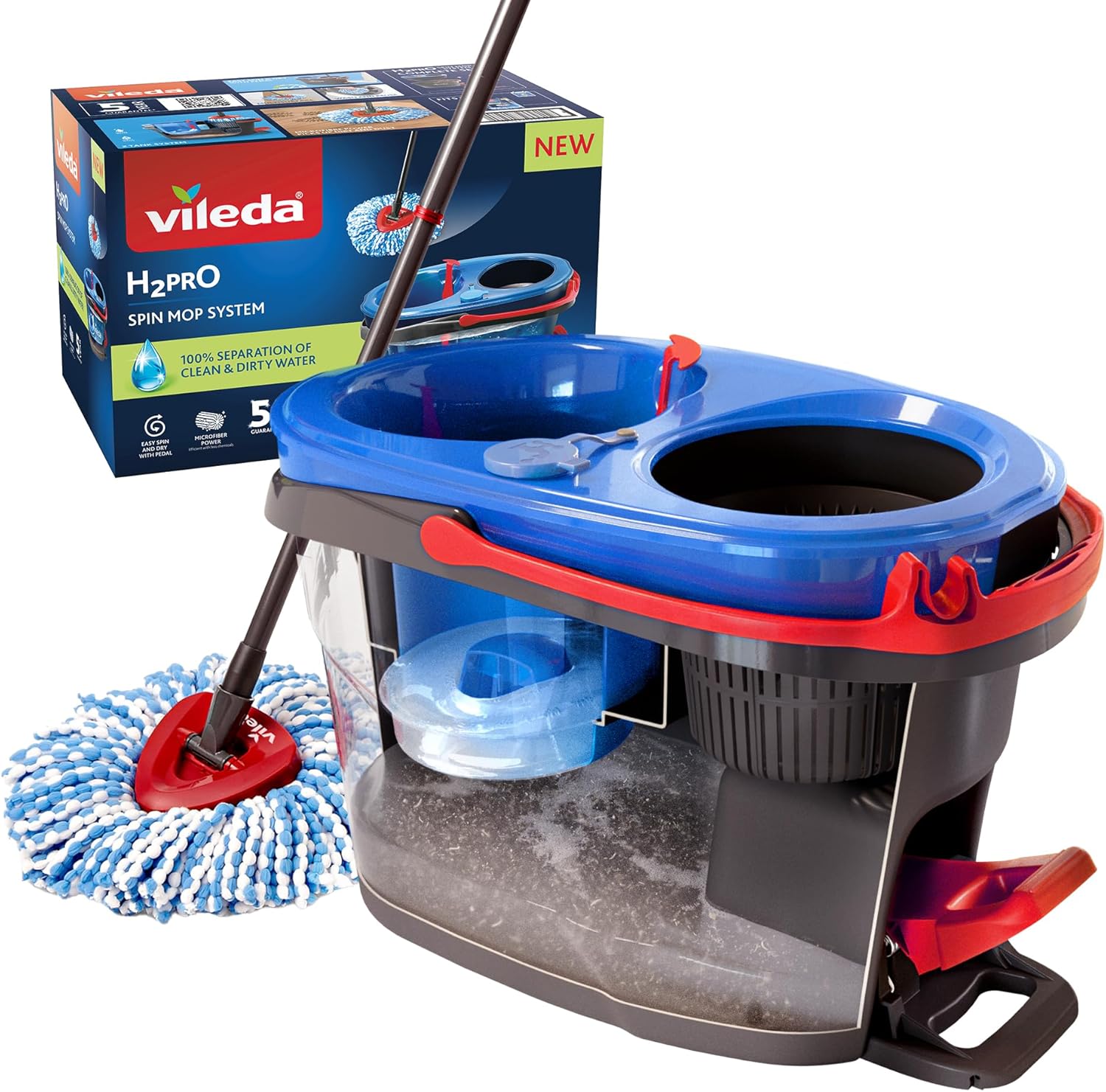
Vileda H2PrO Spin Mop System
|
Understanding Porosity: The Hidden Issue
Terracotta is crafted from natural clay and is fired at relatively low temperatures compared to other tile materials. This manufacturing process results in a highly porous surface that readily absorbs moisture, oils, and dirt, much like a sponge. In practical terms, this porosity allows grime to burrow deep into the tile, making it increasingly difficult to eliminate using standard cleaning methods.
Unsealed terracotta is particularly vulnerable to staining. Without a protective seal, even minor spills or muddy footprints can create enduring marks. Over time, this can lead to a dull, stained appearance that requires professional intervention to reverse.
How Does Surrey's Climate Affect Terracotta Cleanliness?
The weather in Surrey plays a pivotal role in the speed at which terracotta floors accumulate dirt. The region's frequent rainfall and damp conditions mean that more moisture is tracked indoors, particularly through entryways and conservatories.
Homes situated near wooded areas or gardens are particularly at risk. Soil, pollen, and organic debris can easily find their way onto terracotta surfaces, especially if shoes are not removed at the door.
What Daily Habits Contribute to Dirt Accumulation?
Beyond environmental factors, daily habits can exacerbate the issue of dirt accumulation. The use of incorrect cleaning products—such as acidic solutions or bleach—can strip away protective coatings and damage the surface of the tile. While popular, steam mops often push moisture into the tile, worsening the accumulation of dirt.
High-traffic areas, such as kitchens and hallways, are inherently more susceptible to wear and tear. Without consistent sweeping and mopping, dirt can accumulate rapidly and become embedded in the texture of the tile.
Effective Preventive Strategies for Cleaner Terracotta
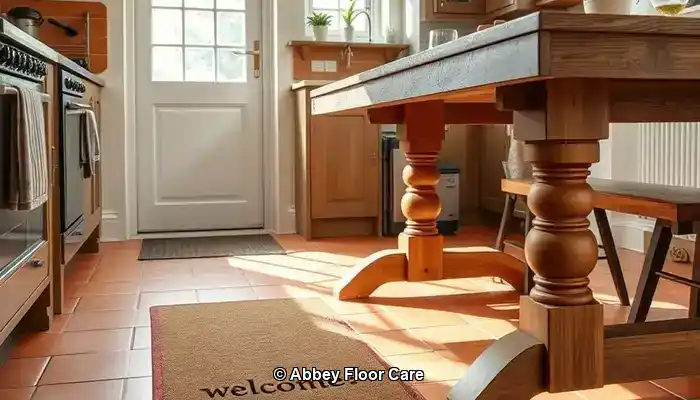
Maintaining clean terracotta floors involves more than merely reacting to dirt; it necessitates a proactive approach to prevent dirt from settling initially. In homes across Surrey, where damp weather and garden traffic are commonplace, taking preemptive measures is vital to preserving the natural beauty of terracotta tiles.
Sealing: Your Primary Protective Measure
The most efficient way to prevent terracotta from becoming dirty quickly is through proper sealing. A high-quality, breathable sealant forms a protective barrier that repels moisture, oils, and grime. In Surrey, where humidity levels fluctuate, sealing is particularly important to prevent water absorption that can lead to staining and mould growth.
Experts recommend resealing terracotta every 12 to 18 months, depending on foot traffic and exposure. In busy areas like kitchens, hallways, and conservatories—places that see daily use—more frequent sealing may be necessary. Always select a sealant specifically designed for porous stone and avoid glossy finishes that can trap dirt on the surface.
Smart Design Choices: Utilising Rugs and Mats
Carefully positioning rugs and mats can greatly minimise the amount of dirt reaching your terracotta tiles. Employ heavy-duty doormats at entrances to catch mud and moisture before it spreads throughout your home. In high-traffic zones such as hallways or beneath dining tables, area rugs act as a protective buffer, preventing wear and tear on the tiles.
In rooms connected to outdoor areas, consider using washable runners that can be cleaned frequently. These not only protect the tiles but also add warmth and style to your home.
Moisture Management Strategies for Surrey Homes
Given that Surrey is known for its rainfall and damp conditions, moisture can accelerate dirt accumulation on terracotta. To mitigate this, use dehumidifiers in enclosed spaces and ensure proper ventilation throughout your home. Always wipe up spills immediately and refrain from leaving wet items, such as shoes or towels, on the flooring.
If your terracotta is laid in a conservatory or garden room, consider installing blinds or UV filters to reduce condensation and sun damage. These small adjustments can significantly impact the longevity of your tiles.
By combining effective sealing, intelligent design choices, and moisture management, homeowners in Surrey can considerably diminish the rate at which terracotta floors become dirty. In the subsequent section, we will explore the best cleaning practices to maintain that fresh, natural appearance day after day.
Optimal Cleaning Techniques for Terracotta Tiles
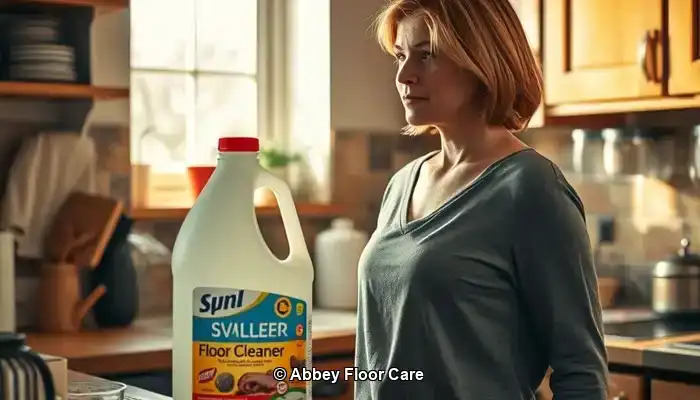
Even when effective sealing and preventative strategies are employed, terracotta floors still require regular care to maintain their inherent beauty. The key lies in using the appropriate techniques and products that cleanse effectively without harming the porous surface of the tile.
Establishing a Daily and Weekly Maintenance Routine
In homes across Surrey, where outdoor elements frequently enter, daily sweeping or vacuuming is essential. Utilise a soft-bristle broom or a vacuum with a hard floor setting to eliminate dust, grit, and organic debris before it settles into the tile.
For weekly cleaning, mop the floor with warm water and a pH-neutral cleaner specifically formulated for natural stone. Avoid soaking the flooring; damp mopping is the preferred method. Excessive water can seep into the tile and cause staining or mould growth, especially in older or poorly sealed installations.
Choosing the Right Cleaning Products
Select products that are gentle yet effective. Look for labels that indicate “stone-safe,” “non-acidic,” or “pH-neutral.” In Surrey, where eco-conscious living is increasingly important, many homeowners opt for biodegradable cleaners that are safe for both pets and children.
Avoid multi-surface cleaners containing bleach, ammonia, or citrus extracts, as these can strip away sealants and etch the terracotta, leaving it vulnerable to future staining.
For persistent stains, use a soft cloth along with a diluted stone cleaner solution. Never scrub with abrasive pads or wire brushes, as these can scratch the surface and make the tile more difficult to clean over time.
What Cleaning Techniques Should Be Avoided: Harsh Chemicals and Steam
Although steam mops may appear convenient, they are ill-suited for terracotta. The high temperature and moisture can penetrate the tile and weaken the sealant, leading to long-term damage. Likewise, acidic cleaners such as vinegar or lemon juice—even when diluted—can erode the tile’s surface and cause discolouration.
Stick to gentle cleaning methods and always test new products on a small, inconspicuous area before applying them across the entire floor.
Weighing Professional Services Against DIY Terracotta Maintenance
When it comes to caring for terracotta floors, many homeowners in Surrey begin with DIY methods. While routine sweeping and mopping can be effective, there comes a point when professional assistance becomes not just beneficial, but necessary.
When Should You Consult a Tile Specialist in Surrey?
If your terracotta tiles display signs of deep staining, uneven colour, or surface wear, it may be time to seek expert assistance. Professional tile care specialists in Surrey utilise advanced equipment and stone-safe products that penetrate deeper than household cleaners. They can also evaluate whether your sealant has deteriorated and recommend an appropriate resealing schedule tailored to your home’s specific conditions.
Restoration services typically include deep cleaning, stain removal, and reapplication of breathable sealants that protect without altering the tile’s natural appearance. For older homes or heritage properties, specialists can even replicate the original finish to maintain authenticity.
Cost vs Longevity: Is Professional Maintenance Worth It?
While DIY cleaning may seem more cost-effective, it often results in short-lived outcomes. Without adequate sealing and thorough cleaning, dirt continues to accumulate, necessitating more frequent maintenance and risking permanent damage.
In contrast, professional care extends the lifespan of your terracotta floors. A single restoration session can rejuvenate colour, eliminate embedded grime, and safeguard the surface for months or even years. In high-traffic zones like kitchens and hallways, this investment pays dividends in reduced maintenance and enhanced visual appeal.
Homeowners in Surrey who prioritise long-term property care and curb appeal often find that expert services provide reassurance and superior results. Additionally, many local providers offer eco-friendly options and customised maintenance plans to accommodate your lifestyle.
Eco-Conscious and Safe Cleaning Solutions for Terracotta
The earthy charm of terracotta deserves equally natural care. For homeowners in Surrey looking to maintain their floors without compromising health or sustainability, eco-friendly cleaning is the optimal solution. Thankfully, modern products and techniques facilitate the protection of your tiles and household without resorting to harsh chemicals.
Choosing Non-Toxic Sealants and Cleaners
Conventional sealants often contain solvents that emit volatile organic compounds (VOCs), which can linger in the air and negatively impact indoor air quality. Today’s eco-friendly alternatives feature water-based formulas that have low VOCs and are safe for use around children and pets.
When selecting a cleaner, search for labels that indicate “biodegradable,” “plant-based,” or “stone-safe.” These products are designed to lift dirt while preserving the porous surface of terracotta. Brands specialising in natural stone care typically offer concentrated solutions that can be diluted for everyday use, thereby reducing waste and packaging.
Safe Alternatives for Homes with Pets and Children
In bustling households across Surrey, safety is just as crucial as cleanliness. Steer clear of bleach, ammonia, and acidic cleaners like vinegar, which can damage the tile and pose risks to pets and young children. Instead, choose gentle formulas based on coconut oil derivatives, citrus enzymes, or mineral-based ingredients.
For those who enjoy DIY solutions, a simple mixture of warm water and a few drops of castile soap can be surprisingly effective for light cleaning. Just ensure you test any homemade solution on a small area first to confirm it won’t affect the sealant or finish.
Developing Sustainable Cleaning Habits
Eco-friendly care extends beyond just products; it encompasses habits as well. Opt for reusable microfiber cloths and mops instead of single-use pads. Regular sweeping helps diminish the need for frequent wet cleaning. When resealing, choose products with recyclable packaging and minimal environmental impact.
Many floor care professionals in Surrey now offer green cleaning packages, utilising certified non-toxic products and sustainable methods. If you’re uncertain where to begin, scheduling a consultation with a local expert can assist you in establishing a routine that is both effective and environmentally conscious.
Ensure Your Terracotta Floors Maintain Their Appeal
Terracotta flooring lends warmth, character, and timeless charm to homes across Surrey. However, its porous nature demands thoughtful maintenance to keep it looking clean and vibrant. By understanding the reasons behind the rapid accumulation of dirt on terracotta, sealing it effectively, and adopting intelligent cleaning habits, you can significantly reduce grime build-up and extend the lifespan of your tiles.
Whether you are managing a busy household or restoring a historic property, consistency is key. Daily sweeping, utilising pH-neutral cleaning solutions, and seasonal resealing contribute significantly to maintaining a well-kept appearance. When stains or wear become evident, don’t hesitate to enlist a local specialist for professional restoration.
Utilising eco-friendly products and safe cleaning practices ensures your floors remain beautiful without compromising your health or the environment. With the right strategies, terracotta can continue to be a stunning feature in your home for many years to come.
Are you ready to protect your floors the intelligent way? Contact us today for expert terracotta maintenance tailored to the unique environmental conditions in Surrey. Let’s work together to keep your home looking its finest—naturally.
Frequently Asked Questions Regarding Terracotta Maintenance
Terracotta floors possess a classic appeal, yet they have unique care requirements. Below are answers to the most commonly asked questions from homeowners in Surrey seeking to maintain their tiles in a clean, protected, and attractive condition.
How Frequently Should I Reseal My Terracotta Tiles?
In the majority of Surrey homes, terracotta should be resealed every 12 to 18 months. However, this may vary based on foot traffic, moisture exposure, and whether the tiles are located indoors or outdoors. Areas such as kitchens, hallways, and conservatories may require more frequent sealing. If your tiles begin absorbing water or appear dull, it’s an indication that resealing is necessary.
Is It Safe to Use Vinegar or Bleach on Terracotta?
No—vinegar, bleach, and other acidic or harsh cleaners can harm terracotta. These substances can degrade sealants and etch the tile surface, resulting in permanent discolouration. Always utilise pH-neutral, stone-safe cleaners formulated for porous flooring.
What’s the Optimal Mop for Terracotta Floors?
A microfiber mop is the most suitable option. It effectively traps dust and dirt without scratching the surface and utilises minimal water, which is crucial for porous tiles such as terracotta. Avoid sponge mops or steam mops, which can oversaturate the tile and weaken the sealant.
Is It Safe to Employ DIY Cleaning Solutions?
Yes, but with caution. A mild combination of warm water and castile soap can be effective for light cleaning. Always test any homemade solution on a small, hidden area first. Avoid any acidic or abrasive substances, and refrain from using homemade cleaners on unsealed tiles.
What Should I Do If My Tiles Have Already Stained?
If stains have set into the tiles, professional restoration is your best option. Tile care specialists based in Surrey can deep clean, remove embedded grime, and reseal the surface to restore the tile’s original colour and texture. DIY methods may exacerbate the damage if incorrect products are used.
The Article: Tired of Dirty Terracotta? How to Keep It Clean Longer was first found on https://www.abbeyfloorcare.co.uk
